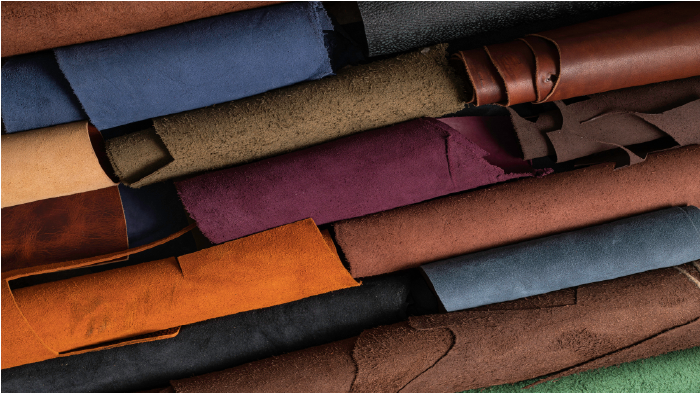Unveiling the Intricate Craftsmanship: The Production Process of Luxury Goods
In a world inundated with mass-produced items and fleeting trends, luxury goods stand as timeless treasures, revered for their unparalleled quality, craftsmanship, and exclusivity. From haute couture fashion to artisanal timepieces and handcrafted furniture, the realm of luxury encompasses a diverse array of products that epitomize excellence in design and production. Behind the allure of these coveted items lies a meticulously orchestrated production process, where tradition, innovation, and artisanal skill converge to create objects of desire.
Join us as we embark on a journey behind the scenes, unraveling the intricate craftsmanship and meticulous attention to detail that define the production of luxury goods.

Vision and Inspiration: The Genesis of Creation
At the heart of every luxury product lies a visionary concept, born from the fertile imagination of designers and artisans who seek to transcend the boundaries of convention. Whether inspired by art, nature, history, or cultural heritage, the genesis of a luxury product often begins with a spark of inspiration that ignites the creative process. Designers delve into research, drawing upon diverse sources of inspiration to develop concepts that resonate with the brand’s identity and ethos.
In the world of fashion, renowned designers immerse themselves in the exploration of fabrics, textures, and silhouettes, envisioning garments that exude elegance and sophistication. Likewise, in the realm of horology, master watchmakers draw upon centuries-old traditions and cutting-edge technology to conceive timepieces of exquisite beauty and precision.
Material Selection: The Pursuit of Excellence
Central to the production of luxury goods is the meticulous selection of materials, where only the finest raw materials will suffice to meet the exacting standards of quality and luxury. Whether it’s sumptuous silk for a couture gown, rare exotic woods for artisanal furniture, or precious metals and gemstones for fine jewelry, every material is chosen for its inherent beauty, durability, and tactile appeal.
Craftsmen scour the globe in search of the most exquisite materials, forging partnerships with trusted suppliers who share their commitment to excellence. Each material undergoes rigorous scrutiny, with artisans evaluating its texture, color, grain, and overall quality to ensure it meets the brand’s exacting standards.
Artisanal Craftsmanship: The Soul of Luxury
At the heart of luxury production lies the timeless art of artisanal craftsmanship, where skilled artisans bring to life the designer’s vision with painstaking precision and expertise. Whether it’s the delicate hand-stitching of a couture gown, the intricate engraving of a fine watch, or the meticulous carving of a bespoke piece of furniture, each step of the production process is imbued with the soulful touch of human hands.
In the ateliers of luxury fashion houses, master tailors and seamstresses employ age-old techniques passed down through generations, ensuring that every stitch is executed with the utmost care and attention to detail. Similarly, in the workshops of master craftsmen, artisans hone their skills over years of training and apprenticeship, mastering the intricacies of their chosen craft to create objects of enduring beauty and value.
Quality Control: The Pursuit of Perfection
Central to the production of luxury goods is an unwavering commitment to quality control, where every item is subjected to rigorous inspection and testing to ensure it meets the brand’s exacting standards. From the initial stages of production to the final finishing touches, craftsmen and artisans meticulously scrutinize every aspect of the product, identifying and rectifying even the slightest imperfections.
In luxury fashion houses, garments undergo multiple fittings and alterations to ensure a perfect fit and finish, with master tailors making precise adjustments by hand to achieve the desired silhouette. Similarly, in the workshops of luxury watchmakers and jewelers, timepieces and jewelry are subjected to stringent quality control checks, with experts meticulously examining each component for flaws or defects.
Innovation and Technology: Bridging Tradition and Modernity
While tradition and craftsmanship form the cornerstone of luxury production, innovation and technology play an increasingly vital role in shaping the future of the industry. From advanced manufacturing techniques to cutting-edge materials and digital design tools, luxury brands are harnessing the power of technology to push the boundaries of creativity and craftsmanship.
In the realm of haute horology, for example, watchmakers leverage state-of-the-art machinery and computer-aided design (CAD) software to engineer complex movements with unparalleled precision and accuracy. Similarly, in the world of luxury automotive design, designers utilize virtual reality (VR) and augmented reality (AR) technologies to visualize and prototype new concepts, enabling them to refine every detail before a single physical prototype is produced.
Exclusivity and Heritage: The Essence of Luxury
At its core, luxury is not merely about the products themselves but rather the intangible qualities they embody: exclusivity, heritage, and a sense of timelessness. From limited edition releases to bespoke commissions and heirloom-quality pieces, luxury goods offer discerning consumers a chance to own a piece of history and tradition, imbued with the craftsmanship and artistry of generations past.
In an age of mass production and disposable consumerism, luxury goods stand as a testament to the enduring power of craftsmanship and creativity. Each item tells a story, reflecting the vision, passion, and dedication of the artisans who brought it to life. As we journey through the production process of luxury goods, we gain a deeper appreciation for the artistry and ingenuity that define this timeless industry.